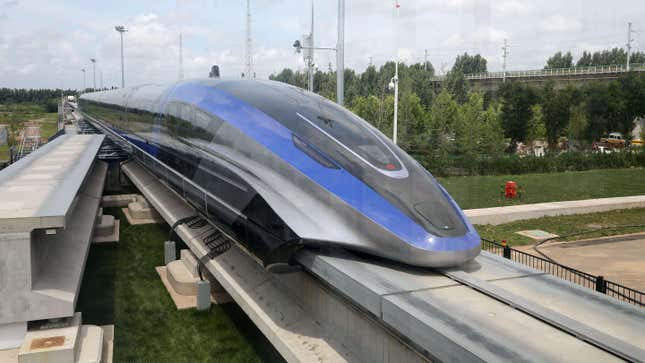Tim Fernholz

The soaring hopes of physics fans (and the enthusiastic bandwagoning of the too-online venture capital community) are about to be disappointed: A miracle metal probably isn’t.
In recent weeks, there’s been a scientific fuss about superconductors—special materials that can conduct electricity without resistance at ultra-low temperatures. A group of South Korean scientists claimed that a special material they created, dubbed LK-99, was not only a superconductor, but could do so at room temperature and pressure, which would be a Nobel-prize level development in physics and could allow for breakthroughs across fields from energy storage to quantum computing.
Despite the excitement, scientists have been suspicious due to the hectic roll-out of the findings by the scientists involved, some strange data, and a history of fraudulent and premature claims of similar discoveries.
Is LK-99 superconductive?
A rush to recreate the material—a combination of lead, copper, oxygen, and phosphorus—and test its properties ensued in laboratories around the world. And now we can say with some certainty that whatever LK-99 is, it’s probably not a superconductor. That conclusion was reached by a committee of South Korean researchers who reviewed the LK-99 team’s published data. A preliminary study in India did not find evidence of superconductivity, and preliminary papers from Chinese researchers who replicated the material say they didn’t discover zero resistance to electrical current at room temperature. Scientists in the UK didn’t find superconductivity in their sample, and neither did an international team (pdf) including scientists at Princeton University.
A recent effort from a group at Peking University suggests that rather than a superconductor, the new material is an unusual magnet. That helps explain the magnetic levitation of LK-99, which might appear similar to, but is not the same as, the total expulsion of magnetic fields found in superconducting materials.
Could LK-99 be superconductive?
Theorists have also performed calculations to understand why LK-99 would display evidence of superconductivity. A number of those papers—like this one from the University of Colorado Boulder and this one from the Lawrence Berkeley National Laboratory—suggest there is a unique chemical structure in the substance that could lead to high-temperature superconductivity under different circumstances.
To be sure, it’s possible that the samples of LK-99 synthesized and tested so far were impure and that is why they did not demonstrate evidence of superconductivity. We still don’t have a peer-reviewed assessment of the material, and major research centers like the Argonne National Laboratory in the US are still performing their analyses.
What’s next in the hunt for room-temperature superconductors?
Michael Norman, a distinguished fellow at the Argonne lab who has worked on this topic for decades, told Quartz last week that when the highest-temperature superconductors we have today—a family of materials known as cuprates—were discovered in the 1980s, not much attention was paid until the effect was replicated six months later. Even if LK-99 itself isn’t the thing, it could inspire new developments.
Norman is interested in superconductivity in metals called nickel oxides, which were discovered in 2015 and have been reproduced. While the material doesn’t superconduct at room temperature, it does so at a higher temperature than most existing alternatives.
“A lot of stuff out there in the mineralogical space could be looked at and investigated to find some interesting physics,” Norman said last week. “Nothing in the laws of physics prevent [room temperature superconductors] from existing. This is the point about investing in science, you never know what you’re going to find.”
No comments:
Post a Comment